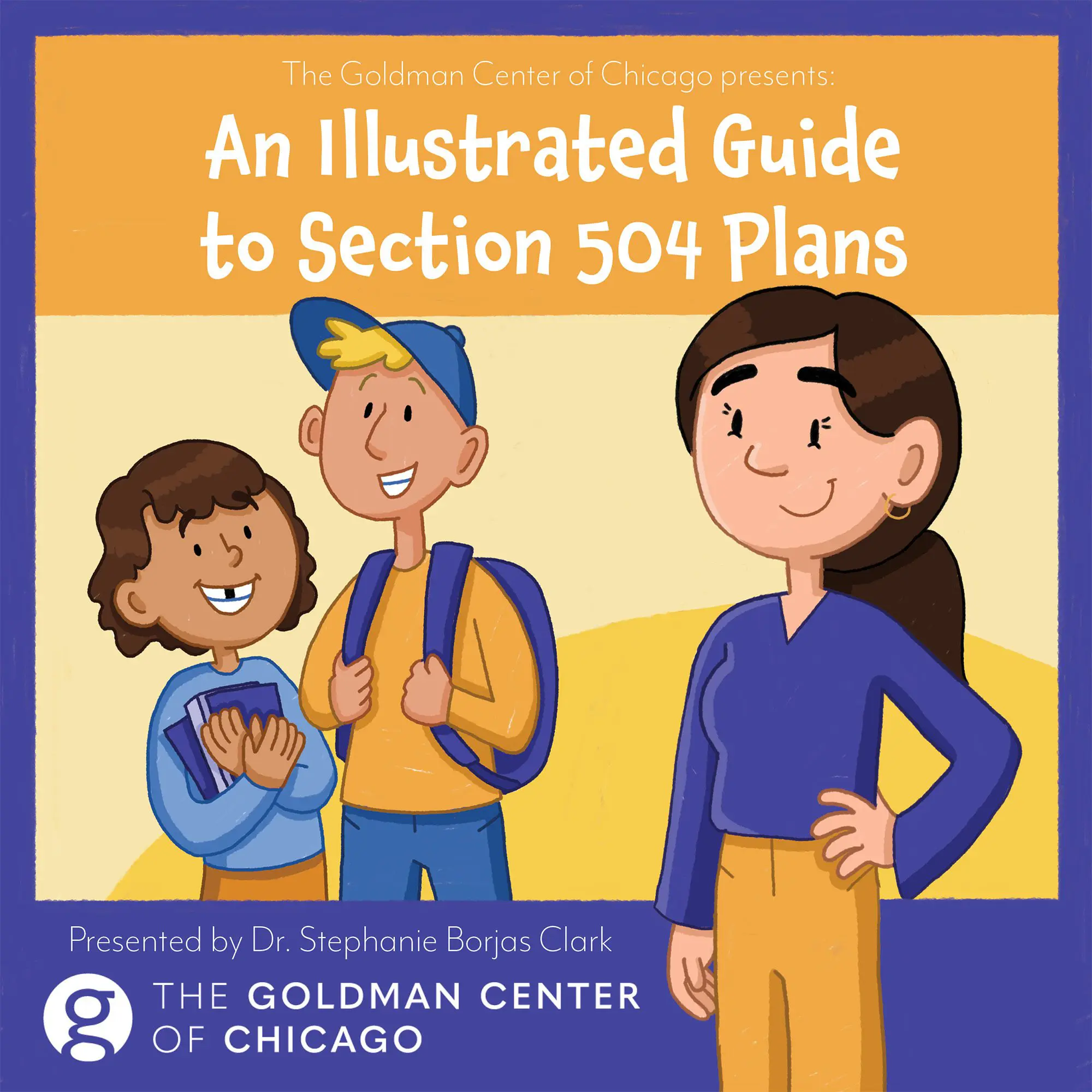Navigating the complexities of school systems as a parent can be challenging, especially if your child has a disability that affects their learning experience. Section 504 of the Rehabilitation Act of 1973 offers important protections for students with disabilities, ensuring they have equal access to educational opportunities. This illustrated guide to Section 504 Plans provides parents with a comprehensive understanding of what these plans entail, how they work, and how to secure one for your child.
What Is a Section 504 Plan?
A Section 504 Plan is designed to provide accommodations and modifications to students with disabilities in K-12 public schools. The goal of this plan is to ensure that students with disabilities can participate fully in school programs and activities. Unlike an Individualized Education Program (IEP), which is covered under the Individuals with Disabilities Education Act (IDEA) and focuses on specialized instruction, a 504 Plan focuses primarily on ensuring access and removing barriers to learning.
Who Qualifies for a Section 504 Plan?
Under Section 504, any child with a physical or mental impairment that substantially limits one or more major life activities is eligible. These activities include learning, reading, concentrating, communicating, and more. Some common disabilities that may qualify a child for a 504 Plan include:
- ADHD (Attention-Deficit/Hyperactivity Disorder)
- Dyslexia or other learning disabilities
- Anxiety disorders or depression
- Chronic health conditions (e.g., diabetes, asthma)
- Autism Spectrum Disorder
- Physical impairments (e.g., vision or hearing loss, mobility issues)
The key factor in determining eligibility is whether the disability significantly limits the child’s ability to perform in a typical educational setting.
Key Components of a Section 504 Plan
Once a child is deemed eligible for a 504 Plan, the school, parents, and other relevant staff collaborate to create a plan that details the necessary accommodations. Here are some examples of accommodations a 504 Plan may include:
- Extended time for tests and assignments: This helps students who need extra time due to processing delays or concentration issues.
- Preferential seating: Ensuring the child is seated in a part of the classroom that minimizes distractions or facilitates learning (e.g., closer to the teacher).
- Assistive technology: Devices such as laptops, tablets, or communication tools to help the child access the curriculum.
- Modified assignments: Adjusting the workload or changing how assignments are presented to suit the child’s needs.
- Frequent breaks: Offering breaks during lessons or testing to help students who may have trouble focusing for extended periods.
- Behavioral intervention plans: Strategies to manage behavior issues that may arise due to the child’s disability.
Each 504 Plan is highly individualized and should reflect the specific needs of the student. Schools are responsible for implementing the accommodations, and parents should monitor the plan to ensure it’s being followed appropriately.
How to Request a Section 504 Plan
Parents play a critical role in advocating for their child’s needs. If you believe your child qualifies for a 504 Plan, the first step is to request an evaluation from the school. Here’s a step-by-step guide on how to initiate the process:
- Submit a written request: Contact your child’s school counselor or principal to formally request an evaluation for a 504 Plan. Be specific about the reasons you believe your child qualifies.
- Schedule an evaluation: The school will schedule an evaluation to assess whether your child has a disability that substantially limits their ability to learn or participate in school activities. This may include reviewing medical records, academic performance, and teacher input.
- Review the evaluation results: If the school determines that your child qualifies under Section 504, the next step is to meet with school staff to discuss what accommodations are needed and how they will be implemented.
- Collaborate on the plan: Work closely with the school to develop a comprehensive 504 Plan. Make sure the accommodations are practical and can be consistently provided by the school.
- Monitor the plan’s implementation: Once the 504 Plan is in place, it’s important to stay involved. Regular communication with teachers and staff ensures that your child receives the necessary accommodations and that adjustments are made as needed.
Section 504 Plan vs. IEP: What’s the Difference?
Many parents wonder how a Section 504 Plan differs from an Individualized Education Program (IEP). While both plans provide support to students with disabilities, they serve different purposes and have different requirements:
- Focus: An IEP provides specialized instruction and related services, while a 504 Plan focuses on removing barriers to learning through accommodations.
- Eligibility: To qualify for an IEP, a student must have one of the specific disabilities listed in the IDEA and require special education. A 504 Plan is broader, covering any disability that substantially limits major life activities.
- Implementation: IEPs are more detailed and are reviewed annually, while 504 Plans are generally simpler and focus on accommodations rather than tailored instruction.
Both plans are important tools for supporting students with disabilities, but which plan is appropriate depends on the child’s specific needs.
Parental Advocacy: Your Role in the 504 Process
Parents are essential advocates for their children in the Section 504 process. Here are some key tips for advocating for your child:
- Be informed: Understand your child’s rights under Section 504 and ensure the school is fulfilling its legal obligations.
- Communicate regularly: Keep in touch with teachers and administrators to monitor your child’s progress and ensure accommodations are being implemented consistently.
- Stay organized: Keep copies of all written communications, evaluations, and the 504 Plan itself for future reference.
- Know when to seek help: If you feel that your child’s needs are not being met, you have the right to request a meeting to revise the plan or to seek outside support, such as an advocate or legal assistance.
Common Myths About Section 504 Plans
Myth #1: A Section 504 Plan is only for students with visible disabilities.
Fact: A wide range of disabilities, including ADHD, anxiety, and learning disabilities, can qualify a child for a 504 Plan, even if they are not immediately visible.
Myth #2: Schools can deny a 504 Plan if the child performs well academically.
Fact: Academic performance alone does not determine eligibility. A child with a disability may need accommodations to address other challenges, such as difficulty concentrating or managing behavior.
Myth #3: Once a 504 Plan is in place, it cannot be changed.
Fact: A 504 Plan can and should be reviewed regularly to ensure it continues to meet the child’s needs as they grow and change.
Conclusion: Empowering Parents and Students
Section 504 Plans are a valuable tool in ensuring that students with disabilities have equal access to education. As a parent, understanding the process and knowing how to advocate for your child can make a significant difference in their academic success and overall well-being.
At The Goldman Center of Chicago, we are committed to supporting parents and children throughout this journey. Whether your child is struggling with ADHD, a learning disability, or another challenge, our expert team is here to provide guidance and help you secure the accommodations your child deserves. Together, we can ensure that every child has the opportunity to thrive in school.






